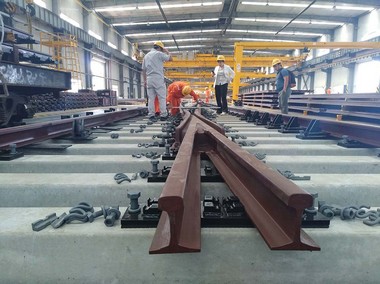
Generally speaGenerally speaking, the main components of a single turnout are turnouts, ruts and guard rails. The laying of the turnout is an important part of the turnout being put into use. Knowing the laying process of the turnout can better use the turnout. The turnout is composed of two basic guide rails, two pointed guide rails and a turnout mechanism; the main function is to operate the lathe to change the position of the sharp rail and determine the opening direction of the switch. The connecting part is mainly composed of two straight guide rails and two guide rails; its main function is to connect the turnout with the rut and protection part to make it a complete turnout. The rut and guard rail is composed of the rut center, the wing rail and the guard rail; its main function is to ensure the safety of the wheels when passing through the intersection of the two railways.
But there is a gap between the narrow wing and the actual tip in the center of the rut, where the rail breaks. This location is called a harmful space. Due to the existence of harmful space, when the locomotive passes through the harmful space of the boss, the flange of the boss may fail, causing the train to derail.
The harmful space of the turnout is an important factor restricting the speed of the turnout. It can be forcibly guided by setting the running direction of protective wheels and guide rails, and moving the centerline bifurcation to eliminate harmful space to adapt to the operation of high-speed trains. Flip the active magnetic core and the magnetic core at the same time; when the switch is opened, in a specific direction, the movable frog core rail is closely attached to the wing rail in the same direction, while opening and separating the other wing rail, the harmful space of turnout can be eliminated , so that the train can run safely.

